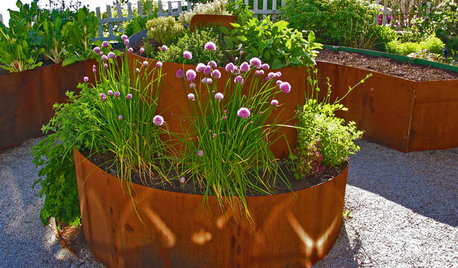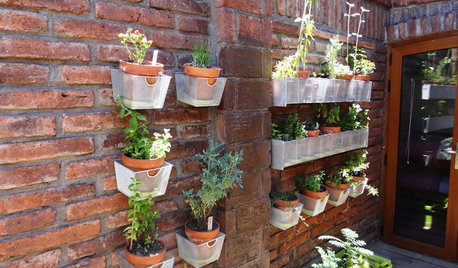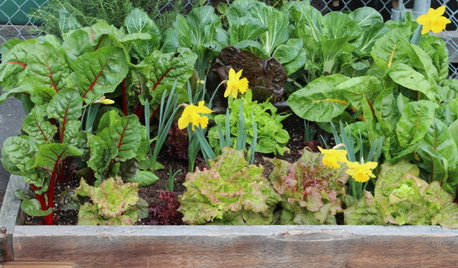growing tomatoes and other veggies with a soaker hose
farismusic
16 years ago
Related Stories

EDIBLE GARDENSSummer Crops: How to Grow Tomatoes
Plant tomato seedlings in spring for one of the best tastes of summer, fresh from your backyard
Full Story
EDIBLE GARDENSSummer Crops: How to Grow Squash
Almost foolproof and with cheerful flowers, squash comes in a wide range of varieties to plant in spring
Full Story
EDIBLE GARDENSHow to Grow Your Own Sweet Summer Crops
This guide will help any gardener get started on growing the freshest warm-season veggies and berries for summer
Full Story
FARM YOUR YARD10 Easy Edibles to Grow in Containers
These herbs, vegetables and fruits are just as happy in a pot as they are in the ground
Full Story
URBAN GARDENSContainers Make Growing Edibles a Cinch
If life hands you a lack of land, grow lemons — with a few basics, you can proudly reap the fruits, veggies and herbs of your labor
Full Story
EDIBLE GARDENSHouzz Call: Where Are the Craziest Places You Grow Edibles?
Basil in a bathtub, spinach stacked up a wall ... If your edibles occupy an odd spot, we’d like to know
Full Story
FARM YOUR YARDHow to Grow Vegetables in Containers
Get glorious vegetables and fruits on your patio with a pro’s guidance — including his personal recipe for potting mix
Full Story
FARM YOUR YARDGrow a Kitchen Garden in 16 Square Feet
Got a sunny 4-by-4 space? You can make meals more interesting with your own vegetables and herbs
Full Story
FARM YOUR YARDHow to Build a Raised Bed for Your Veggies and Plants
Whether you’re farming your parking strip or beautifying your backyard, a planting box you make yourself can come in mighty handy
Full Story
EARTH DAYGrow a Beautiful Garden With Ecofriendly Greywater
Reducing home water waste means lower bills and a healthier planet. Here's how to set up a greywater home irrigation system that can help
Full StoryMore Discussions






koreyk
gonefishin
Related Professionals
Wrentham Landscape Architects & Landscape Designers · Mitchellville Landscape Architects & Landscape Designers · Columbine Landscape Contractors · Pikesville Landscape Contractors · Southbury Landscape Contractors · Weymouth Landscape Contractors · Beloit General Contractors · Coffeyville General Contractors · El Monte General Contractors · Mililani Town General Contractors · Millbrae General Contractors · Sterling General Contractors · Wyomissing General Contractors · Boston Decks, Patios & Outdoor Enclosures · Midlothian Decks, Patios & Outdoor Enclosureshortist
sautesmom Sacramento
woodenzoo
farismusicOriginal Author
okcdan
korney19
qaguy
lightt
brazosvalleygardener
woodenzoo
oceansunfish
Coast Live Tropicals